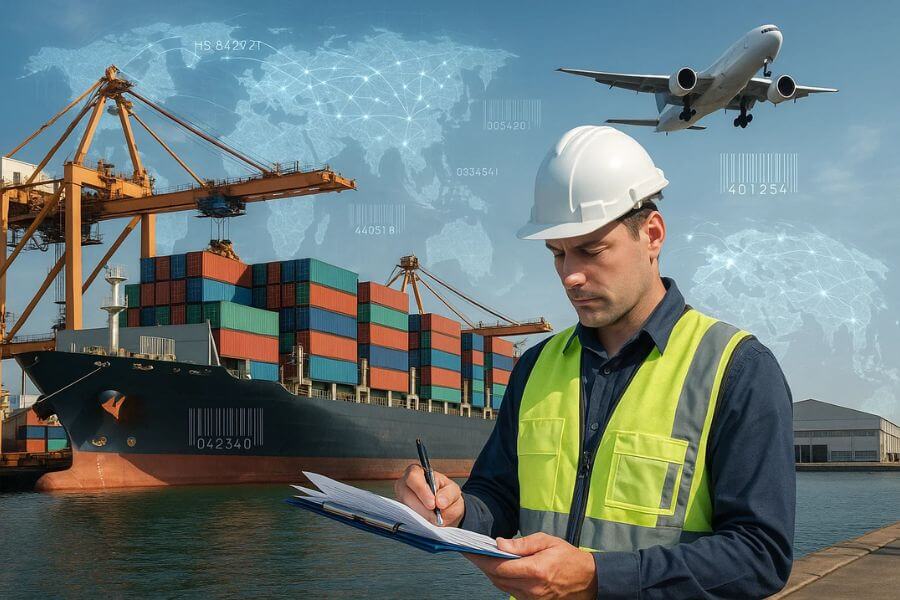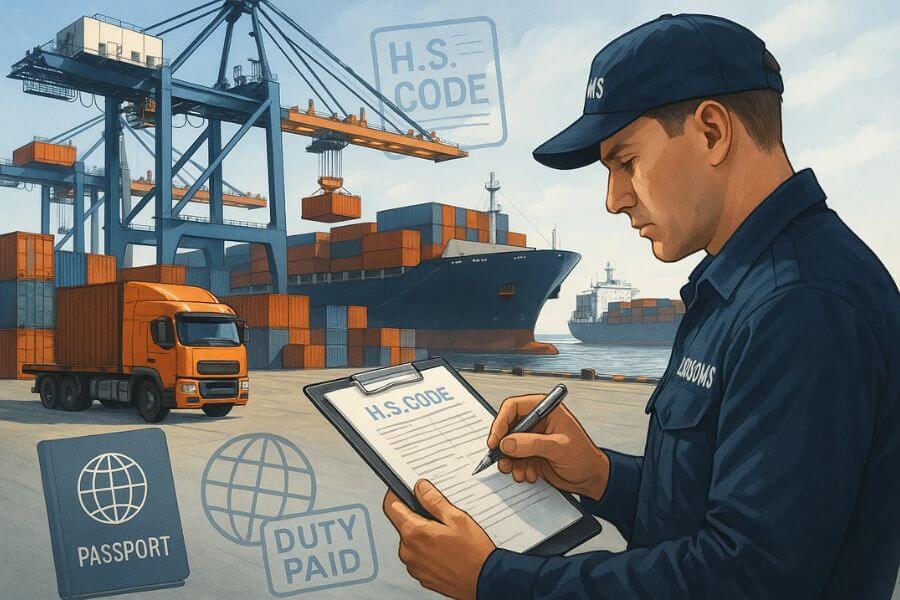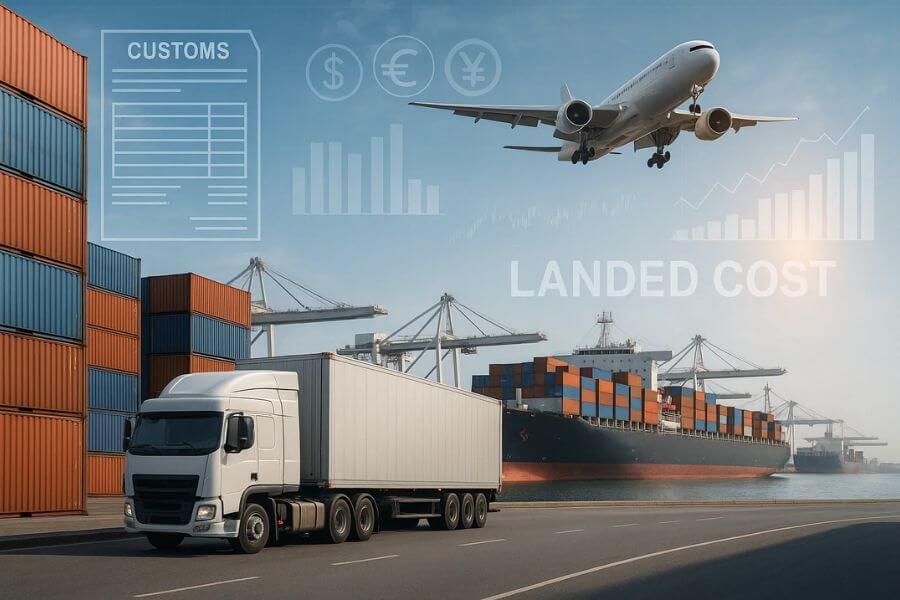If you’re running an ecommerce business, you know that getting products from your supplier to your customer is a critical part of your operation. But have you ever wondered what makes this process official, legal, and trackable? Enter the Bill of Lading (often called a B/L or BoL). It’s one of the most important shipping documents in logistics, yet it often confuses newcomers.
This guide will explain the bill of lading, explain why it matters, and show you how to use it effectively in your ecommerce fulfillment process. Whether you’re shipping locally or internationally, understanding the bill of lading will help you avoid costly mistakes, protect your goods, and ensure smooth deliveries.
What is a Bill of Lading?
A bill of lading is a legal document between the shipper (you or your supplier) and the carrier (the company moving your goods). It acts as:
- A receipt for the goods shipped.
- A contract outlining the terms of the shipment.
- A document of title, which can be used to claim ownership of the goods.
Think of it as the ultimate proof that your products are in transit, and a record of how, when, and where they’re being shipped.
Why is the Bill of Lading important in ecommerce?
For ecommerce businesses, the Bill of Lading is vital because:
- It protects your interests: It proves what was shipped, to whom, and under what terms.
- It’s required for insurance claims: If goods are lost or damaged, you’ll need the BoL to file a claim.
- It helps prevent disputes: Clear documentation helps resolve any disagreements about the shipment.
- It’s necessary for customs: For international shipments, customs authorities require the BoL to process and clear goods.
Who are the key players in a Bill of Lading?
Understanding who is involved in a Bill of Lading will help you communicate and coordinate better.
- Shipper: The person or company sending the goods (often you or your supplier).
- Carrier: The company transporting the goods (like FedEx, Maersk, or a local trucking firm).
- Consignee: The person or company receiving the goods (your customer or your warehouse).
- Notify party: The person or company to be notified upon arrival (sometimes the same as the consignee).
What are the different types of Bill of Lading?
There isn’t just one kind of BoL. Here are the most common types you’ll encounter in eeommerce.
1. Straight bill of lading
- Non-negotiable.
- Goods are delivered only to the named consignee.
- Common for direct shipments to customers.
2. Order bill of lading
- Negotiable.
- Can be transferred to another party by endorsement.
- Useful in transactions where goods might be sold while in transit.
3. Sea Waybill
- Non-negotiable and electronic.
- Used for sea freight; no original document is needed to release the goods.
- Speeds up the process for regular, trusted partners.
4. Air Waybill
- Used for air shipments.
- Functions like a BoL but is always non-negotiable.
5. Through bill of lading
- Covers multiple modes of transport (e.g., sea, rail, and truck).
- Useful for complex, multi-leg shipments.
What information is on a Bill of Lading?
A BoL contains all the essential details about your shipment. Here’s what you’ll typically find:
- Names and addresses: Of shipper, consignee, and notify party.
- Description of goods: Quantity, type, weight, dimensions, and packaging.
- Shipping instructions: Special handling, temperature requirements, etc.
- Carrier information: Name, contact, and transport method.
- Origin and destination: Where the goods are coming from and going to.
- Freight terms: Who pays for shipping, insurance, customs, etc.
- Date of shipment
- Unique reference numbers: For tracking and record-keeping.
Bill of Lading vs. other shipping documents
It’s easy to confuse the BoL with other paperwork. Here’s how it compares:
- Bill of lading: Legal contract and proof of shipment.
- Packing list: Details what’s inside the shipment, but not a legal contract.
- Commercial invoice: Used for customs, shows value for duties/taxes.
- Proof of delivery (POD): Signed by the recipient upon delivery.
Each document serves a different purpose, but the BoL is the backbone of your shipping paperwork.
Real-world example of BOL
Let’s walk through a real-world scenario:
You run an online store selling eco-friendly water bottles. A customer in Canada places a bulk order.
- You prepare the shipment and book a freight forwarder.
- You fill out the Bill of Lading, listing the number of boxes, weight, and consignee details.
- The carrier picks up the goods and signs the BoL.
- The shipment travels by truck to the port, then by ship to Vancouver.
- At customs, the BoL is presented along with the commercial invoice and packing list.
- The consignee (your customer) presents the BoL to claim the goods.
- You keep a copy of the signed BoL for your records.
Thanks to the BoL, everyone knows what was shipped, who’s responsible, and how to resolve any issues.
Frequently asked questions of BOL
Q1. Do I always need a Bill of Lading?
A1. For most shipments involving a carrier, yes. For small domestic parcels, the carrier’s shipping label often serves as a simplified BoL.
Q2. Can I create my own Bill of Lading?
A2. Yes, but it must include all required information and be accepted by your carrier. Many carriers provide templates.
Q3. What happens if I lose the Bill of Lading?
A3. Contact your carrier immediately. For negotiable BoLs, losing the original can be serious. Electronic versions help prevent this issue.
Q4. Is the BoL needed for returns?
A4. If goods are being returned via a carrier, yes-a new BoL is typically generated for the return shipment.
Q5. How long should I keep Bills of Lading?
A5. Keep them for at least 3-5 years, or as required by your country’s regulations and your insurance provider.
Summary
In ecommerce, a Bill of Lading is a legal document that lists and describes the goods being shipped, serves as a contract between the seller and the carrier, and acts as a receipt and proof of ownership for the recipient.





